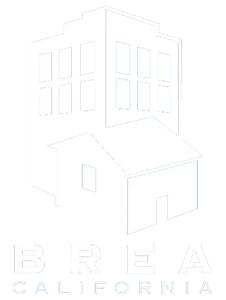Real estate appraisals can be done in various ways, from forms to written narrative reports to verbal communication of a value.
There are many appraisal forms because each serves a specific purpose. The following is a list of the different types of appraisal forms that appraisers typically use.
The following forms are the real estate appraisal forms most commonly used by real estate appraisers.
| Form | Property Type or Use | Inspection Type |
|---|---|---|
| 1004 | Single Family Home | Interior & Exterior |
| 1073 | Condominum | Interior & Exterior |
| 2055 | Single Family Home | Exterior Only |
| 1075 | Condominum | Exterior Only |
| 1004C | Manufactured Home | Interior & Exterior |
| 1025 | 2-4 Units | Interior & Exterior |
| 71A | Multi-Family (5+ Units) | Interior & Exterior |
| 71B | Multi-Family (5+ Units) | Interior & Exterior |
| GP Residential | Single Family Home | Interior & Exterior, Exterior, None |
| GP Condo | Condominum | Interior & Exterior, Exterior, None |
| GP Commerical | Commercial | Interior & Exterior, Exterior, None |
| GP Land | Land | Interior & Exterior, Exterior, None |
| GP 2-4 Unit | 2-4 Unit | Interior & Exterior, Exterior, None |
| 1004D | Appraisal Update or Completion | Interior & Exterior, Exterior |
| 1007 | Single-Family Rent Schedule | Interior & Exterior, Exterior, None |
| 216 | Operating Income Statement | Interior & Exterior, Exterior, None |
| 1004 Desktop/ 70D | Single-Family Home | None |
| 1004 Hybrid/ 70H | Single-Family Home | Inspection by Third Party (Not Appraiser) |
Residential Property Forms
Appraisal forms can be divided into a few categories, but the main two are residential and commercial forms. Residential forms are used for residential properties, and commercial forms are used for commercial properties.
Properties that are considered residential properties include single-family homes, condominiums, mobile homes, and 2-4 unit properties.
Fannie Mae and Freddie Mac developed the following six forms in 2005.
Interior and Exterior Inspection Forms
1004 – Single-Family Residential
The 1004 appraisal form is probably the most common and widely used appraisal form for residential appraisers. That is because it is the form for single-family residential properties.
The 1004 is used when an appraiser is required to do an interior and exterior inspection. It is typically used when a lender is ordering an appraisal for a refinance or purchase transaction.
This is the detached single-family residential form, as well as the townhouse appraisal form.
Here is a sample of a Form 1004 appraisal.
1073 – Individual Condominium
The 1073 form is probably the second most commonly used real estate appraisal form for residential properties.
This form is used to produce an individual condominium unit appraisal report.
The 1073 is similar to the 1004 form in that it was developed for conventional lending purposes. It differs in that it is used to appraise condominiums instead of single-family properties.
This form has many of the same fields, but many are condo-specific.
Exterior Only Inspection Forms
The forms above are always used when an interior inspection of the property is required.
The following two forms are for when the property is only inspected from the exterior, called an “Exterior Only” appraisal.
These are, however, both still considered appraisal forms for conventional loans on residential properties.
2055 – Exterior-Only Single-Family Residential
The 2055 form is an exterior-only form for single-family homes and is only used when requested by the client.
The exterior only single-family form is typically used when the loan to value is low or access to the interior of the property is not possible.
It is also used when servicing loans.
1075 – Exterior-Only Individual Condominium
The 1075 appraisal form is similar to the 1073 form for individual condo units, but like the 2055 above, it is for exterior-only inspections.
It has many of the same fields as the 1073 form, but some related to interior characteristics are removed.
Interior or Exterior Inspection
This is where it can get confusing.
The following two forms can be used for either an interior or exterior inspection. Typically they are used when a full inspection is required.
1004C – Manufactured Home
Like the 1004 and 1073 forms, the 1004C is also for residential properties but of a different sort. The 1004C form is for manufactured homes.
Many of the fields are similar to the single-family and condo forms, but many are specific to manufactured homes.
1025 – 2-4 Unit
The 1025 form is a little different than the previous ones, but I included it in the residential forms section because it is used for what is still considered a residential property.
That is a 2-4 unit property.
This form is a little different in that it includes additional sections specific to 2-4 unit properties.
These sections include rental comparables before the sales comparables and value indicators below the sales comparables.
This is an appraisal form used for investment properties.
Commercial Property Forms
Now that we have covered the residential appraisal forms, we will get into the commercial ones.
There are only a few commercial appraisal forms because most commercial properties are appraised with written reports (Narrative reports).
However, if the property is on the smaller side, or the client doesn’t need a full narrative appraisal report, then a form will typically be used.
71A & 71B – Commercial Multi-Family
These two forms are both used for the same type of property, multi-family properties (5 or more units).
Both of these forms have the same base template and provide the same results in a similar methodology; the 71A is just a much more in-depth report.
The 71B appraisal form is a condensed version of the 71A form.
GP Commercial
The third commercial appraisal form is the GP Commercial form.
“GP” stands for “General Purpose” or a general-purpose form. GP forms will be explained more in the following section.
By the name, you can probably guess that this form can be used for any type of commercial property that isn’t overly large and/or complex.
I have appraised everything from office buildings to religious facilities and retail buildings on the GP Commercial form.
It is very versatile and very easy to work with.
General Purpose (GP) Forms
Now, to go a little more in-depth with the General Purpose (GP) forms. The GP forms are a great series of forms that include a special form for each type of property.
Often, these forms are used when the client simply wants to know an estimate of the market value of a property. They are also the forms you would want to use for estate-related appraisals, divorce appraisals, property tax appeal appraisals, etc.
The GP series of forms are not to be used for conventional lending purposes.
GP forms can be used for interior/exterior inspections, exterior-only inspections, and desktop appraisals.
GP Residential
The GP Residential appraisal form is for single-family properties and would be used in place of the 1004 form.
GP Condominium
The GP Condo form is for individual condominium units and is used in place of the 1073 form for condominiums.
GP Commercial
The GP Commercial form, as explained above, is for non-complex commercial properties. This form can be used for a wide variety of commercial properties.
GP Land
The GP Land form is the form that is typically used if the client is looking to find the value of a parcel of land.
Usually, it is used for residential land, but it can also be used for commercial land.
GP 2-4 Unit
The GP 2-4 unit is used for income properties that have 2 to 4 units. It is used in place of the 1025 form.
Other Forms
The major appraisal forms are summed up above, but there are some additional forms that serve other purposes.
These forms can be ordered as a supplement to the major report or as a standalone report.
1004D – Appraisal Update or Completion Report
The 1004D is utilized when a client wants the appraiser to either a) verify that the value has not changed since the effective date of the prior appraisal or b) go back and reinspect the property to verify that something has been repaired or replaced.
1007 – Single-Family Rent Schedule
The 1007 form is used as a supplement to the 1004/2055 forms talked about above.
This form is used to provide rental comparables and estimate the rental income for the subject property. This is typically used for investment properties.
216 – Operating Income Statement
The 216 form is usually ordered in conjunction with the 1007 form. It is used to determine the operating income of the subject property. It takes the market rent minus operating expenses to determine the operating income.
New Forms
Since writing this article, two new forms have been added to the appraiser’s repertoire. These are the 1004 Desktop and 1004 Hybrid appraisal forms.
Both of these forms are extremely controversial within the appraisal industry because of their lack of inspection and reliability on third-party data.
Lenders love these forms because they can charge less and get the reports back faster. Appraisers are mixed on these forms because they leave significant room for error.
1004 Desktop/70D – Single-Family Desktop
The 1004 Desktop form is now used by Fannie Mae and Freddie Mac (70D) as a way to complete an appraisal on a property without having the appraiser do an inspection. Sometimes a floor plan will be provided to the appraiser, but often not.
1004 Hybrid/70H – Single-Family Hybrid
The 1004 Hybrid/70H form is similar to the 1004 Desktop form, but instead of no inspection, a third party inspects the property and provides a report to the appraiser.


